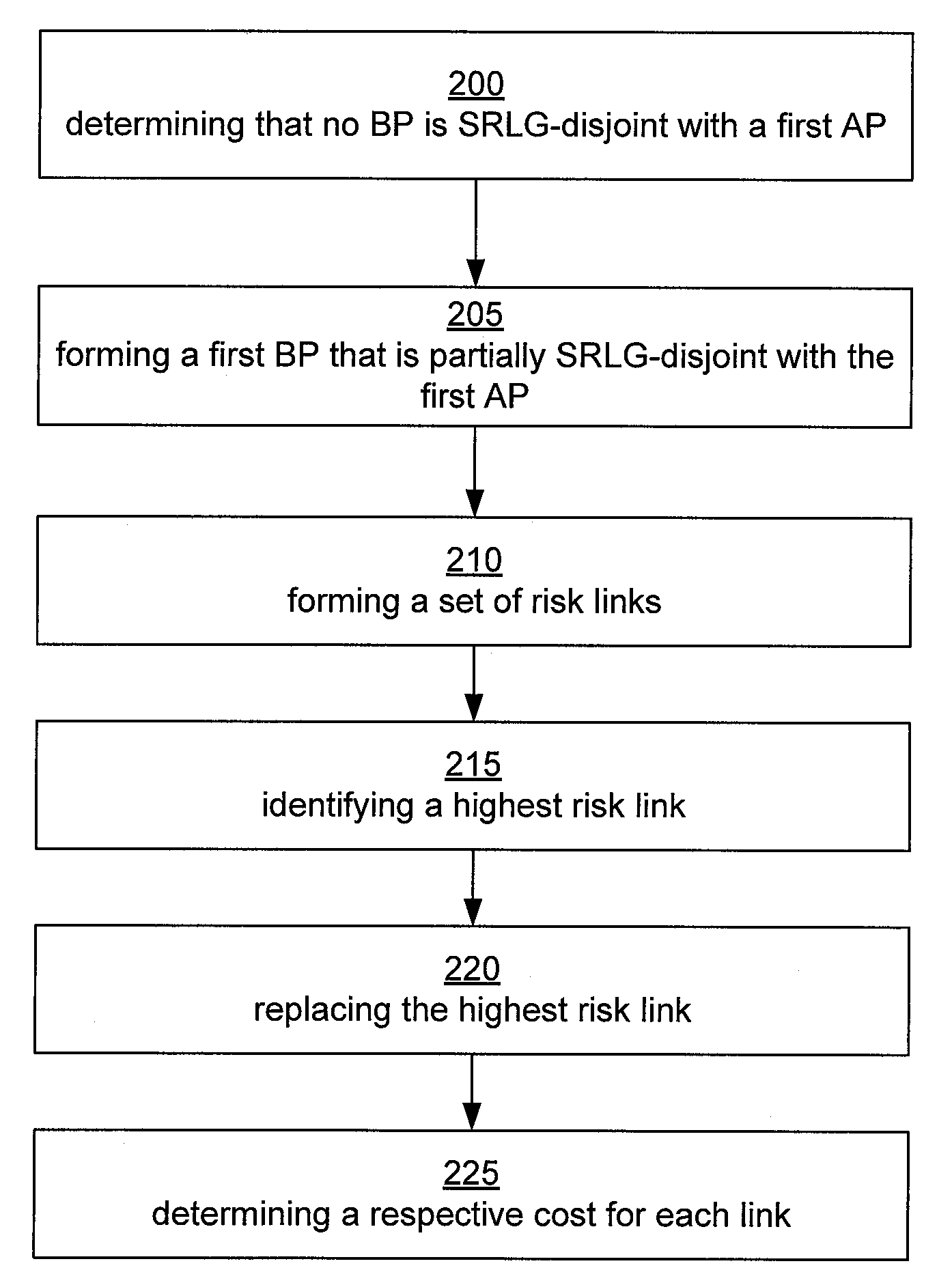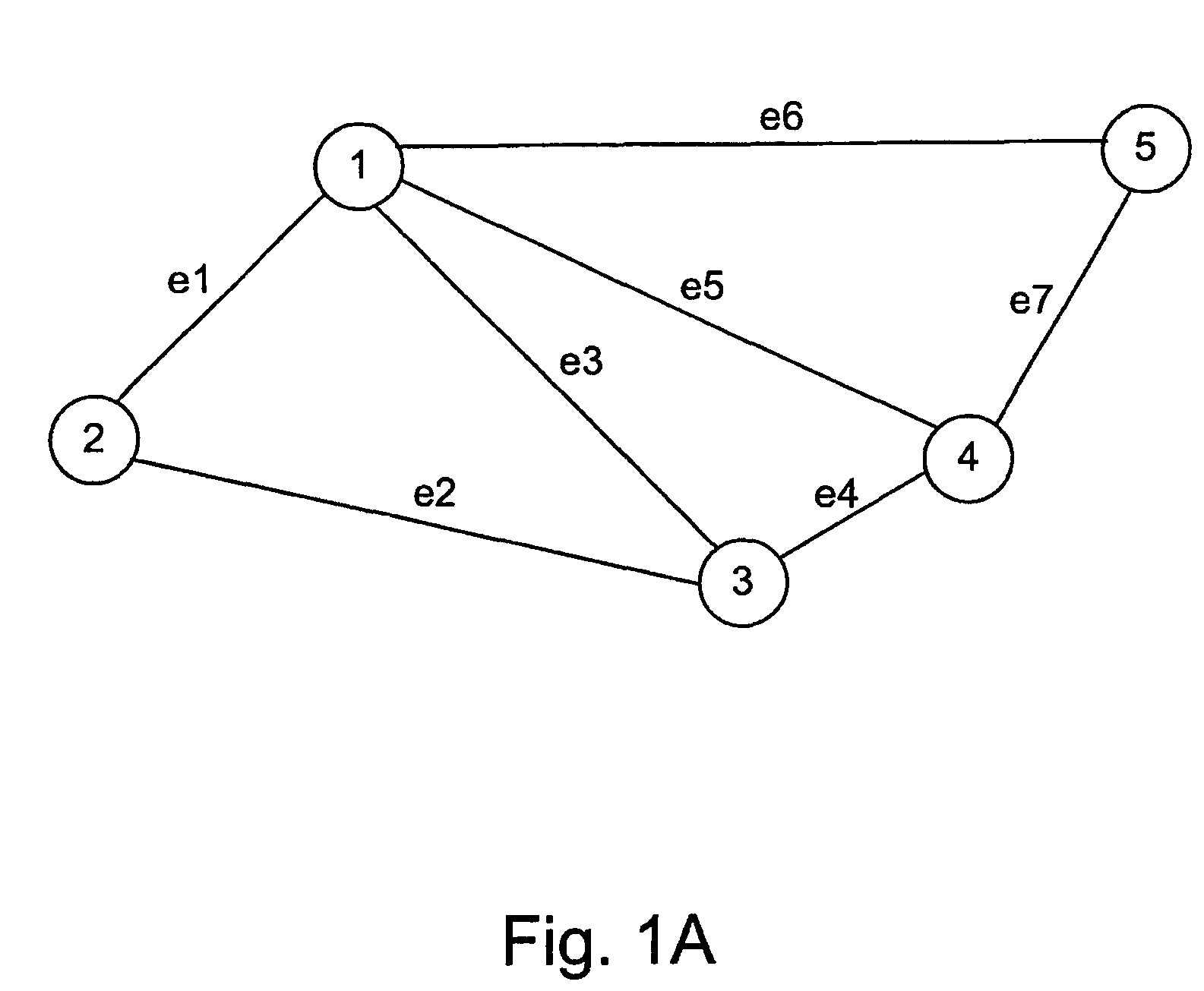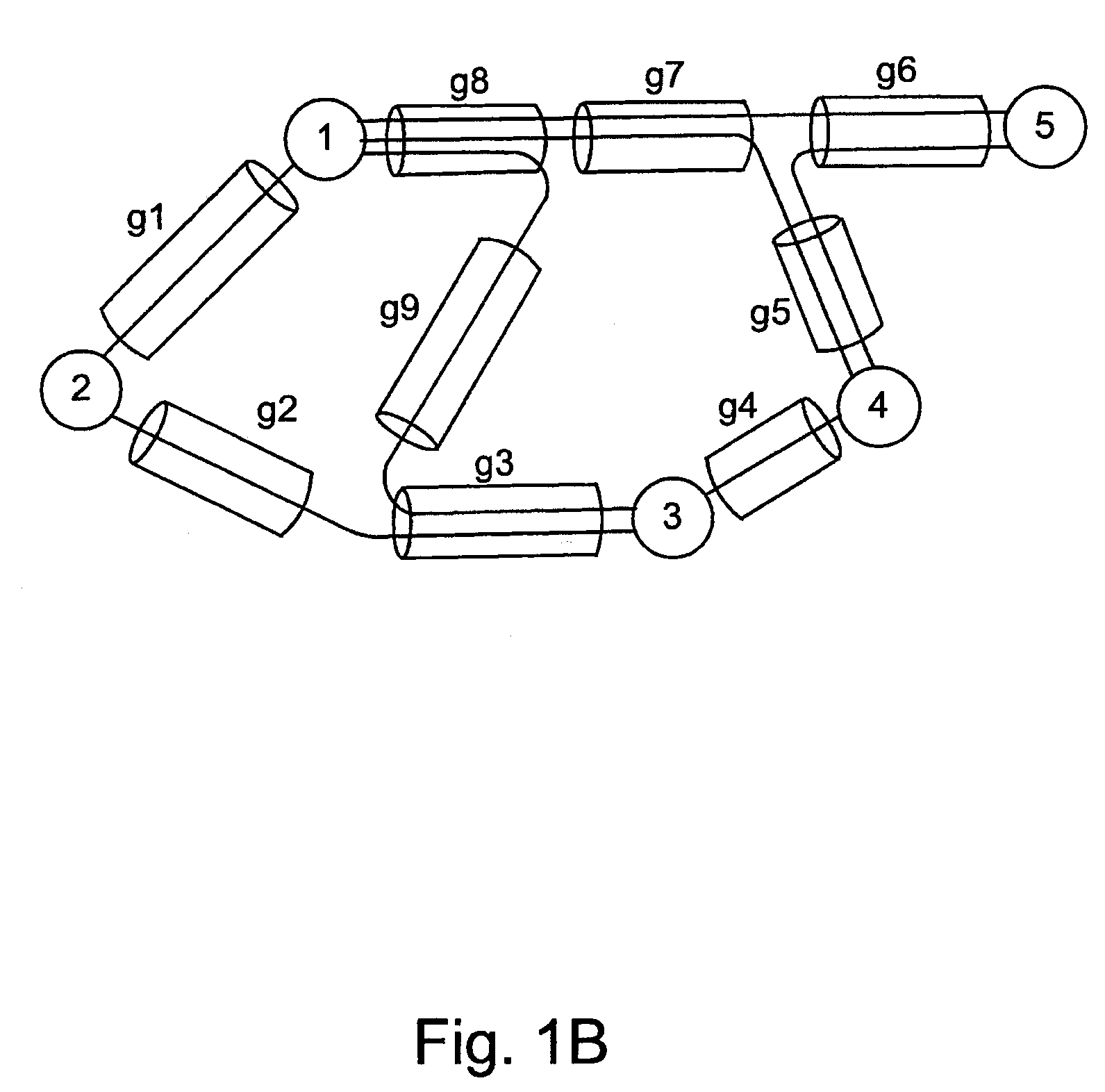Efficient trap avoidance and shared protection method in survivable networks with shared risk link groups and a survivable network
a technology of shared risk and protection method, which is applied in the field of efficient trap avoidance and shared protection method in a survivable network with shared risk link group, can solve the problems of not fully exploring the theoretical interest, issues that are more challenging in providing shared path protection than in providing shared srlg protection, etc., and achieves faster and efficient heuristic algorithm, higher bandwidth efficiency, and high bandwidth efficiency
- Summary
- Abstract
- Description
- Claims
- Application Information
AI Technical Summary
Benefits of technology
Problems solved by technology
Method used
Image
Examples
Embodiment Construction
[0020]The following acronyms are used in the detailed description of the present invention:
[0021]SRLG: Shared Risk Link Group
[0022]GMPLS: Generalized Multi-protocol label switching
[0023]DWDM: Dense Wavelength Division Multiplexing
[0024]TA: Trap Avoidance
[0025]ILP: Integer Linear Programming
[0026]KSP: K Shortest Paths
[0027]IP: Internet Protocol
[0028]ATM: Asynchronous Transfer Mode
[0029]AP: Active Path
[0030]ABW: Active Bandwidth
[0031]BBW: Backup Bandwidth
[0032]TBW: Total Bandwidth
[0033]DPIM: Distributed Partial Information Management
[0034]SCI: Sharing with Complete Information
Notation
[0035]For purposes of illustrating and describing the invention, we consider a network G with E directed links (represented by set ∈) and V nodes. To facilitate our description, we will use a tuple (s→d, w) to represent a new request for connection establishment (or release), where s and d are the source (or ingress) and destination (or egress) of the connection, respectively, and w is the bandwidth (in u...
PUM
| Property | Measurement | Unit |
|---|---|---|
| residual bandwidths | aaaaa | aaaaa |
| residual bandwidth | aaaaa | aaaaa |
| time | aaaaa | aaaaa |
Abstract
Description
Claims
Application Information
 Login to View More
Login to View More - R&D
- Intellectual Property
- Life Sciences
- Materials
- Tech Scout
- Unparalleled Data Quality
- Higher Quality Content
- 60% Fewer Hallucinations
Browse by: Latest US Patents, China's latest patents, Technical Efficacy Thesaurus, Application Domain, Technology Topic, Popular Technical Reports.
© 2025 PatSnap. All rights reserved.Legal|Privacy policy|Modern Slavery Act Transparency Statement|Sitemap|About US| Contact US: help@patsnap.com



